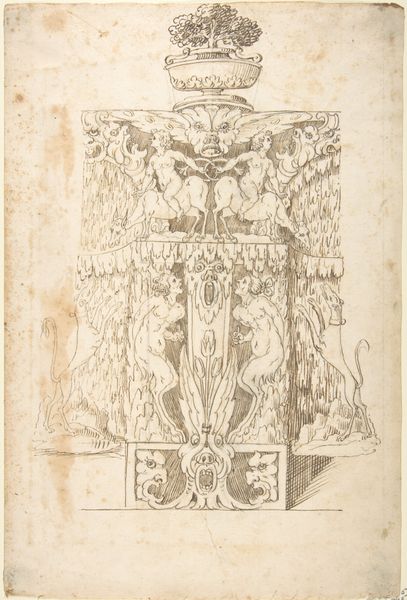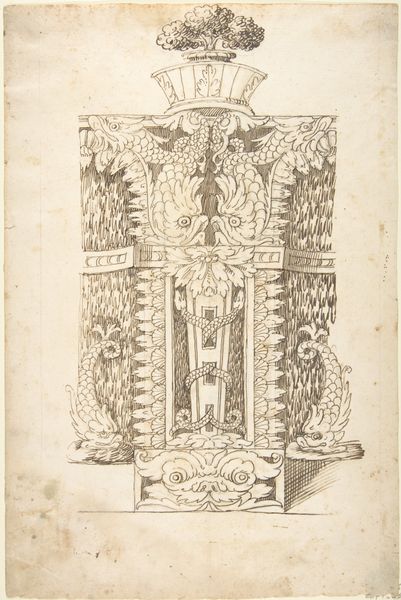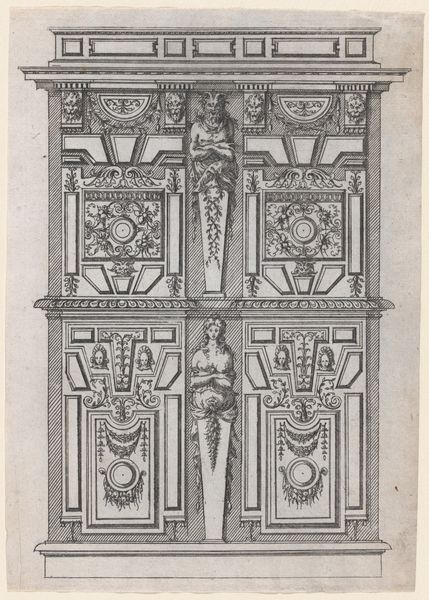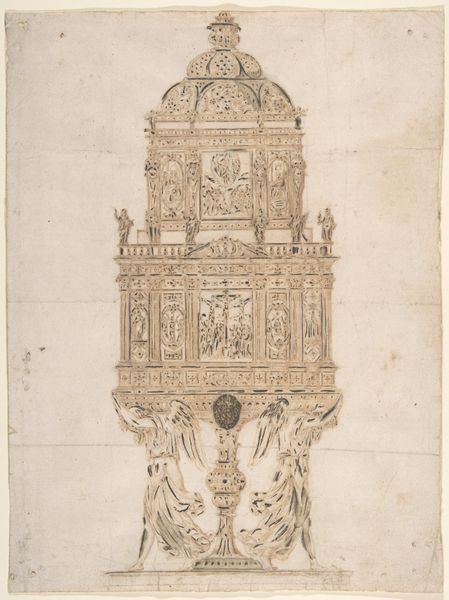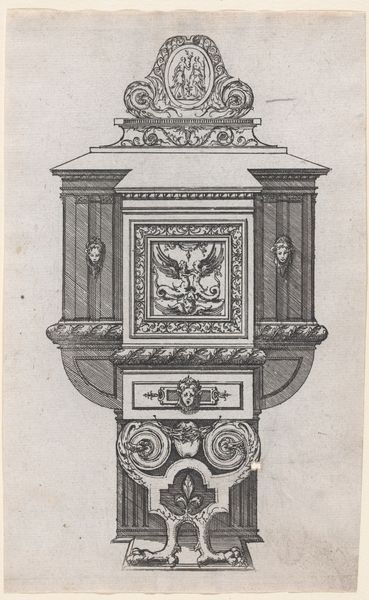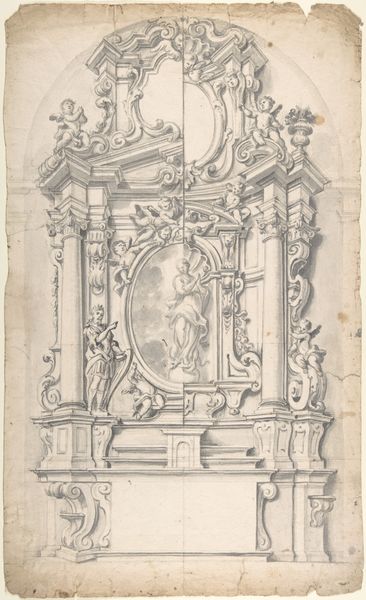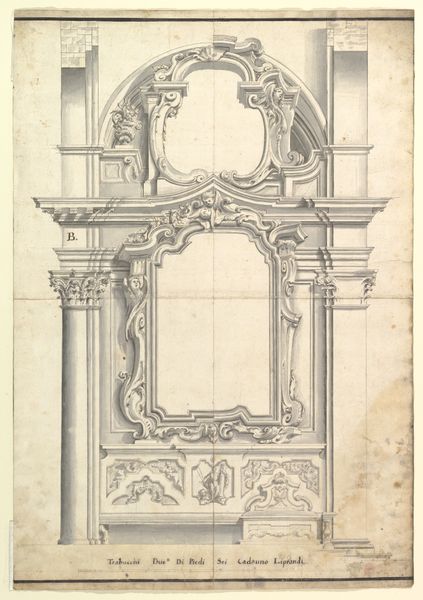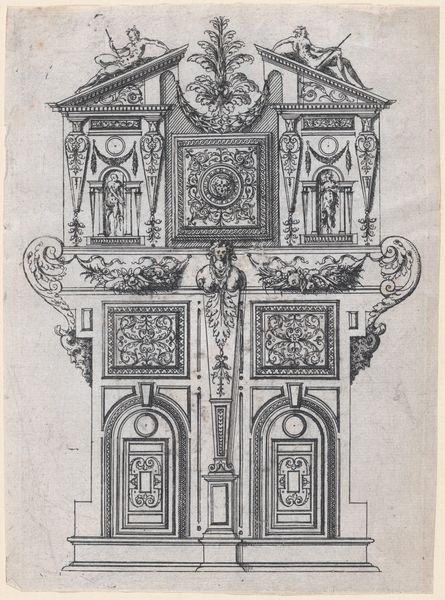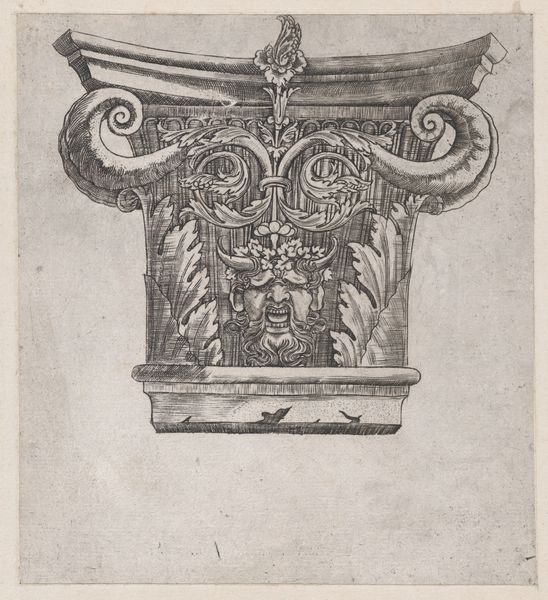
drawing, print, pencil, engraving
#
drawing
#
ink painting
# print
#
pencil sketch
#
etching
#
11_renaissance
#
pencil
#
history-painting
#
engraving
Dimensions: 14 13/16 x 10 in. (37.6 x 25.4 cm)
Copyright: Public Domain
Curator: What an interesting composition. The fountain has a distinct architectural quality, wouldn’t you agree? Editor: It certainly does. I immediately notice how static it feels, despite being a design for a water feature. I’m drawn to the somewhat forlorn figures clinging to its sides, dwarfed by the grand design. Curator: This is “Design for a Wall Fountain,” and it comes to us from sometime between 1550 and 1620, though the artist is, unfortunately, anonymous. It is rendered in pencil and ink, possibly as a print or engraving. Considering its history, it does prompt reflections on the display of power and the taming of nature so prevalent in Renaissance art. Editor: Power definitely comes to mind, especially when considering the human figures that frame what looks like controlled water flows, each component seems deliberate. I find the mermen at the top almost sorrowful in expression and the figure on each side even moreso. Is this about the domestication of nature for civic or even aristocratic pride? Curator: I think you are right, these ornamental fountains in the Italian Renaissance had political dimensions that served as symbolic reflections of governance, where water management and architectural finesse projected a controlled social order. Editor: The piece feels ambivalent though. The meticulous detail stands in contrast to the rather rough and hurried quality of the execution; it is just a sketch, but for what end? Also, in rendering the fountain this way, the figures almost appear to be in anguish, subservient to the overall structure. Curator: I find that fascinating. I tend to focus on the cultural aspirations inherent in the design, how the symmetry and classicizing details hark back to a golden age. But the sketch-like quality does lend a feeling of transience. A vision not quite brought to fruition. Editor: Perhaps the intention was simply documentation. A record of the concept of idealized public architecture during this time in preparation for an engraver? The figures on each side remind me of the constant flux within established orders. Curator: Your socio-political interpretation provides quite a counterbalance. The psychological implications are hard to overlook. Thank you for your sharp observations, it enhances my experience of this drawing considerably. Editor: And you have placed the art within its critical socio-historical context, broadening my own view.
Comments
No comments
Be the first to comment and join the conversation on the ultimate creative platform.


